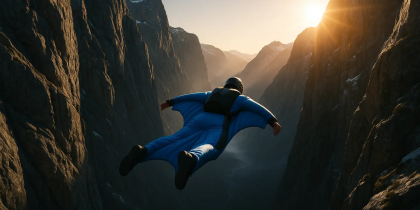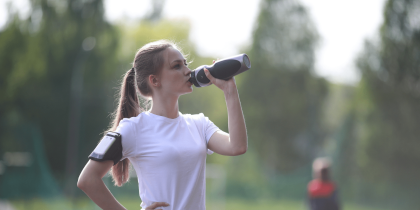Want to make the most of winter without getting lost in the jungle of winter sports? Between crowded slopes and lesser-known activities, choosing the ideal discipline can quickly become a headache. Yet behind every winter sport lie thrilling sensations, unique experiences in nature, or even innovative training methods like fat biking or sea walking. Discover our exclusive selection from classics like alpine skiing to more unusual gems and finally find the activity that matches your mood, thanks to our clever comparison guide and expert advice on how to face the cold safely.
What Is a Winter Sport?
Definition and Growing Popularity
Winter sports refer to athletic activities performed on snow or ice, directly linked to cold-weather conditions. This definition, established by the Association of International Olympic Winter Sports Federations (AIOWF), encompasses a wide range of disciplines that gained worldwide fame through the Winter Olympic Games. Since their creation in 1924 in Chamonix, these games have turned local traditions into global phenomena, attracting millions of viewers. Today, 15 Olympic winter sports including alpine skiing and figure skating reflect this evolution, crossing geographical borders despite the climate change that now threatens some of these practices.
A Wide Range of Activities for Every Taste
Winter sports fall into two main categories: those performed on snow (alpine skiing, snowboarding, freestyle skiing) and those on ice (skating, hockey, luge).
For thrill-seekers, skeleton and bobsleigh offer extreme sensations, reaching speeds of over 140 km/h. Nature lovers tend to prefer cross-country skiing or snowshoeing, both accessible even off groomed trails.
More recent activities, such as fat biking with its extra-wide tyres designed for snow or speed riding, a hybrid between skiing and paragliding, further expand the options.
Finally, strategic ice sports like curling or the biathlon, which combines skiing and shooting, showcase the diversity of winter disciplines, open to all ages and ability levels.
The Essentials of the Snow: Classic Sliding Sports
Alpine Skiing
Alpine skiing, the emblematic discipline of winter sports, attracted 55 million participants in 2023. Suitable for all skill levels, it is practised using rigidly mounted skis from green slopes for beginners to black runs for experts.
Associated with speed and freedom, this Olympic sport (since 1936) burns between 360 and 532 calories per hour. Modern techniques such as carving have revolutionised the experience of gliding on both groomed and fresh snow.
Snowboarding
A bold alternative to skiing, snowboarding embodies the thrill of winter sports. Practised on a single board, it combines creativity and control, featuring tricks in half-pipes or jumps in the backcountry. A must at the Winter Olympics, it attracts a young and passionate community.
Accessible from the age of six, it helps develop balance and coordination. Freestyle and slopestyle competitions highlight its spectacular side, while all-mountain boards adapt to every terrain.
Cross-Country Skiing and Luge
Cross-country skiing, a Nordic activity focused on endurance, appeals to nature lovers. A full-body sport, it stimulates the cardiovascular system while exploring snowy landscapes.
Luge, a fun and family-friendly activity, guarantees laughter and excitement. At moderate speeds, it’s suitable for children from the age of five. Competitive versions, however, can reach 145 km/h, with times measured to the thousandth of a second.
These disciplines symbolise the evolution of winter sports now accessible to everyone thanks to modern equipment and professional instructors.
Beyond the Slopes: Exploration and New Sensations
Snowshoe Hiking
Want to escape without leaving the mountains? Snowshoe hiking offers access to landscapes unreachable in summer. With no complex technique required, this activity suits everyone even beginners. It combines gentleness and intensity: walking through snow builds endurance, strengthens the legs, and tones the abdominal muscles.
At dawn, fresh tracks and the silence of snow-covered forests create an experience of total disconnection. It’s a simple way to (re)discover the mountains differently breathing in pure air and observing the discreet winter wildlife.
Fat Biking
Fat biking turns winter into a playground. Its wide tyres (up to 5.5 inches) glide effortlessly over snow, sand, or mud. Ideal for exploring remote paths, it combines freedom and adventure. In its electric version, it even allows less experienced riders to enjoy the scenery without fatigue.
This machine redefines limits: snowy forests, deserted beaches… For thrill-seekers, the electric fat bike is a comfortable and innovative way to explore otherwise inaccessible areas.
Original Practices Between Land and Sea
Why not try land sailing? On a windy beach, this wheeled, sail-powered vehicle delivers exhilarating speed with minimal training. Accessible from the age of eight, it combines adrenaline with coastal discovery the wind becomes your engine for a fun and refreshing experience.
By the sea, “sea walking” (also known as longe côte) offers a surprising workout. Walking waist-deep in seawater strengthens the body and boosts the immune system. The cold water stimulates blood circulation, while the sea air soothes the mind. It’s best practised in groups for a moment of wellness and energy.
For adventurers, ski mountaineering blends hiking and gliding. For those curious to explore this demanding sport, ski mountaineering offers both endurance and elevation thrills. These activities prove that you can find unusual and exciting sports even in the heart of winter.
Which Winter Sport Should You Choose? Our Comparison Table
A Guide to Finding Your Ideal Activity
Choosing a winter sport depends on your personal preferences, physical condition, and goals: seeking adrenaline, connecting with nature, enjoying family fun, or focusing on endurance. To help you decide, here’s a comparison table of the main options with their key features. Whether you’re a beginner or experienced, a speed enthusiast or a slow explorer, this selection covers the most popular sports for all profiles.
| Sport | Type | Required Level | Ideal For | Main Equipment |
| Alpine Skiing | Snow | All levels | Family, Thrill-seekers | Skis, boots, poles |
| Snowboarding | Snow | Beginner to Advanced | Thrill-seekers | Board, boots |
| Cross-country Skiing | Snow | All levels | Endurance, Nature | Thin skis, boots, poles |
| Snowshoe Hiking | Snow | Beginner | Nature, Family | Snowshoes, poles |
| Ice Skating | Ice | All levels | Family, Elegance | Ice skates |
| Fat Bike | Snow/Sand | Intermediate | Exploration, Nature | Wide-tyre bike |
| Sea Walking | Sea | Beginner | Well-being, Endurance | Neoprene wetsuit |
Staying Active in the Cold: Indoor Alternatives
When Sport Moves Indoors
The winter season doesn’t have to mean less physical activity. For those who avoid the cold or have limited time, indoor sports provide accessible options. These disciplines help maintain fitness, burn off festive-season calories, and prepare the body for summer, no matter the weather.
Intense and Well-rounded Disciplines
Here are some effective ways to stay active indoors:
- Bouldering: A full-body sport combining strength, agility, and strategy, practised on equipped climbing walls with thick mats. Suitable from age 4, it boosts focus and confidence. Available in gyms such as Climb Up or Arkose.
- Fit Boxing: A mix of boxing and fitness, alternating dynamic sequences and punching bag work to energising playlists. A 45-minute session burns around 350 calories, tones the whole body, and serves as an excellent stress release. Offered in venues such as Brooklyn Fitboxing.
- Fitness Racing (Hyrox-type): A unique format combining running and functional exercises (rowing, sled push, wall balls). Open to everyone, it builds endurance and power. Available in places like Hego or Fitness Park, with events gathering up to 4,000 participants.
- Yin Yoga: A meditative practice focused on holding postures for 3 to 5 minutes, targeting deep tissues to improve flexibility and calm the mind. Ideal for active recovery in winter, accessible in studios or online.
Cold weather is no barrier to staying active. Each discipline strikes a balance between intensity and relaxation, ensuring a dynamic and energising winter season.
Mountain Safety: The Golden Rules for a Peaceful Experience
Adapting to the Cold
Whether you’re skiing the slopes of Chamonix or hiking in the Alps, cold weather can be a silent danger. Did you know that hypothermia can occur even in clear weather at temperatures close to 0°C? Intense shivering, drowsiness, and difficulty walking are warning signs that should never be ignored.
Frostbite often affects extremities (fingers, ears) and causes tingling, numbness, or discolouration of the skin. The three-layer principle remains the best way to regulate body temperature and stay safe in cold conditions.
Essential Equipment and Good Habits
To face the elements, here are the must-have items:
- First layer (breathable): Choose merino wool or polyester to wick away perspiration. Avoid cotton, which traps moisture.
- Second layer (insulating): Opt for a technical fleece or lightweight down jacket. Down offers optimal warmth during breaks.
- Third layer (protective): A waterproof and breathable jacket with a membrane (at least 10,000 mm Schmerber) shields you from wind and snow.
- Extremities: A beanie or helmet with warm lining protects your head. Thick gloves and merino wool socks keep hands and feet warm.
- Sun protection: Snow reflects up to 80% of UV rays. A high-SPF sunscreen and category 4 sunglasses are essential.
In case of an accident, a helmet can reduce head injuries by 35%, according to a 2010 study. Always make sure you have suitable ski insurance covering rescue and assistance costs. For hikers, anti-slip crampons are vital on icy trails, especially in mid-altitude areas where falls are common.
The Future of Winter Sports in a Changing Climate
A Model in Transition
Climate change is reducing natural snowfall: the Alps have lost one month of snow cover in the past 50 years, with a projected decrease of 10 to 40% by 2050. At lower altitudes, snow is disappearing, threatening ski resorts. Glaciers such as Ossoue have shrunk by 64% since 1924 and could vanish entirely before 2050, increasing natural hazards.
Towards New Practices?
Artificial snow, used to compensate, consumes around 20 million m³ of water and 112 million kWh per year in France a costly and temporary solution. By 2050, 45% of the Alps could lose their snow cover, even with snowmaking.
In response, the National Adaptation Plan for Sport (Pnacc Sport) recommends diversifying towards four-season activities such as mountain biking, adventure parks, and indoor climbing. The resort of Métabief, for instance, plans to end alpine skiing by 2035, illustrating a shift towards a more resilient and eco-conscious mountain model.
Winter sports combine tradition and innovation, offering a wealth of activities for every taste from mountain gliding to indoor fitness. Faced with climate challenges, their future depends on adaptation and environmental preservation, uniting pleasure, safety, and sustainability for responsible winters to come.



